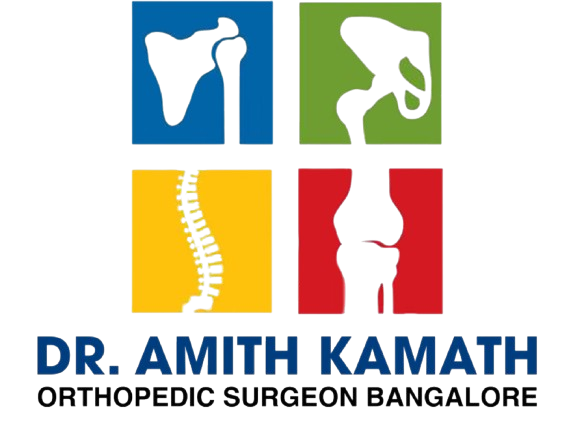Knee Replacement Surgery
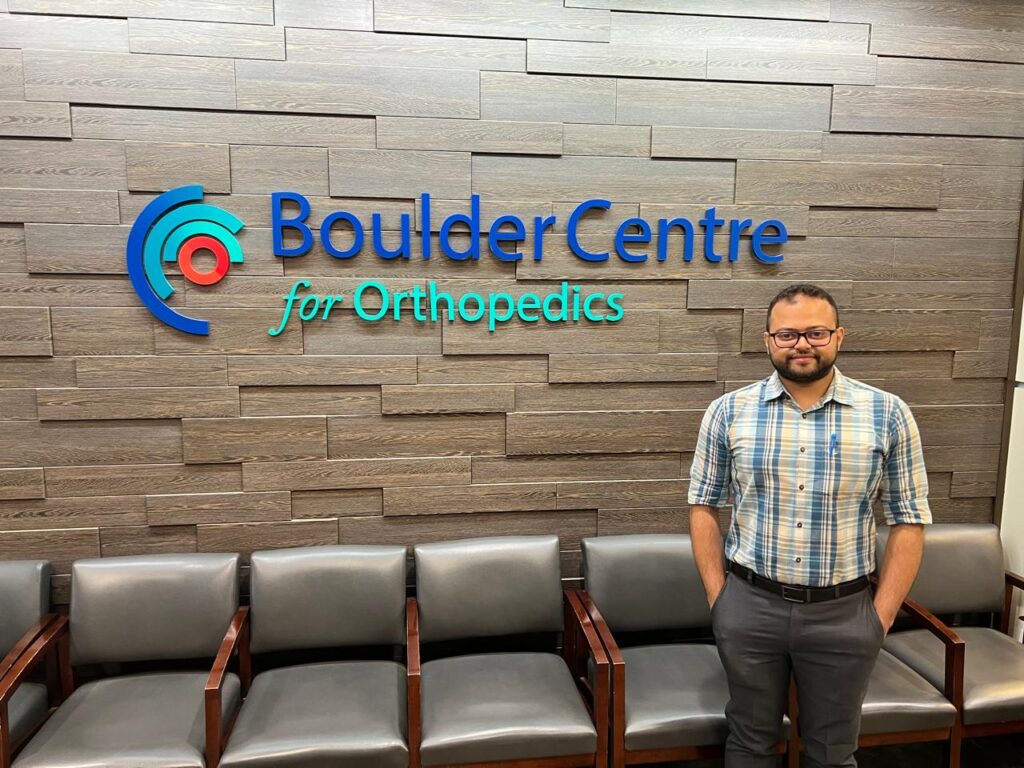
Our Popular Services
Hip Replacement Surgery
Knee Replacement Surgery
Spine Surgery
Shoulder Joint Replacement Surgery
Arthroscopic Surgery
Fracture Treatment
Sports Injuries
Knee Replacement Surgery in Bangalore
Knee replacement surgery is recommended for arthritis or injury of the knee that prevents it from moving freely. The knee comprises of three compartments namely the medial compartment (inside portion of the knee), the lateral compartment (outside) and the patellofemoral compartment (in front portion of the knee- knee cap). When the cartilage wears off and the bone rubs against the bone, it causes severe pain on the knee. This puts a great strain on the mobility and can prevent you from performing your daily activities. Now this option is sought out when knee pain shows no improvement or the knee develop deformity.
The most frequent reason for knee replacement surgery is to relieve severe pain caused by osteoarthritis. For patients who require knee replacement surgery, walking, climbing stairs, and getting in and out of chairs are all frequent issues.
Knee Arthritis can also occur in conditions such as Rheumatoid Arthritis and other auto-immune diseases such as psoriatic arthritis or metabolic conditions such as gout that can affect joints.

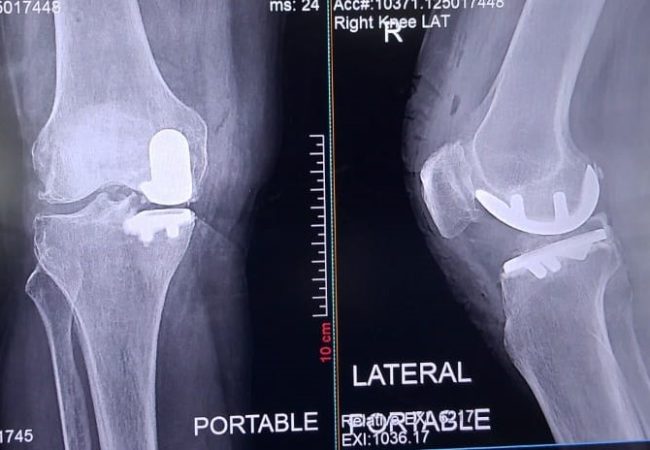
Partial knee Replacement
Unicompartmental Knee Replacement (UKR) involves making a small incision to access the knee and remove damaged cartilage and bone from only one compartment (medial, lateral, or patellofemoral) of the knee joint. A metal and plastic prosthetic is then inserted to replace the damaged surface. The remaining healthy parts of the knee are preserved. After implantation, the incision is closed, and rehabilitation focuses on restoring knee function and mobility.
To go for partial or complete knee replacement would be recommendation of your doctor (Knee Replacement Surgeon in Bangalore). Many factors will be looked into like as with the passage of time the other compartment also would wear out. Discuss your options with your surgeon for the best outcomes.
Total knee Replacement
Total Knee Replacement (TKR) involves making an incision to access the knee joint, where damaged cartilage and bone are removed. The femur, tibia, and patella are resurfaced with metal and plastic components to create a new joint. The prosthetic parts are precisely aligned for proper movement and stability. After the components are implanted, the incision is closed, and rehabilitation begins to regain knee function and mobility.
Advantages of Knee replacement surgery are
- Freedom from suffering
- Improved mobility
- Better quality of life as doing daily tasks and exercise becomes easier
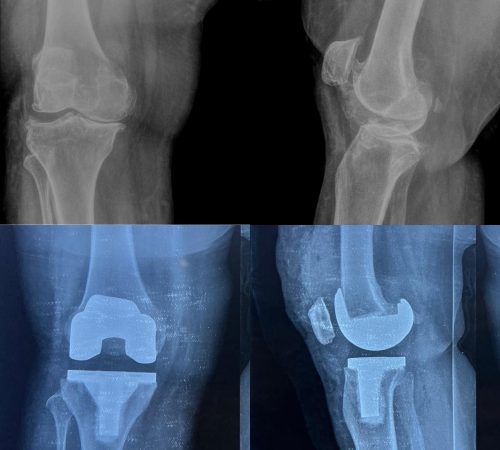

What are the risks involved ?
As with any surgery, risks are involved – advanced age , diabetes , associated comorbidities- hypertension , obesity , cardiac disease contribute to issues like deep venous thrombosis ,fat embolism, ARDS, pulmonary embolism ,prolonged hospital and icu stay , infection- early and delayed , prolonged stay , implant issues. We try to minimize the incidence of such issues with the use of best patient practices , a team approach and operating in hospitals with state of art joint replacement surgery facilities .
Recovery after knee surgery
Simple steps for speedy recovery
- Follow your Surgeon’s Instructions
- Be regular and consistent with physiotherapy exercises – before and after surgery
- Avoid kneeling and squatting after the knee replacement surgery
- Straight back chairs are recommended and recliners should be avoided.
- Remove rugs and unnecessary materials off the floor to avoid any fall.
- Do not touch the wound.
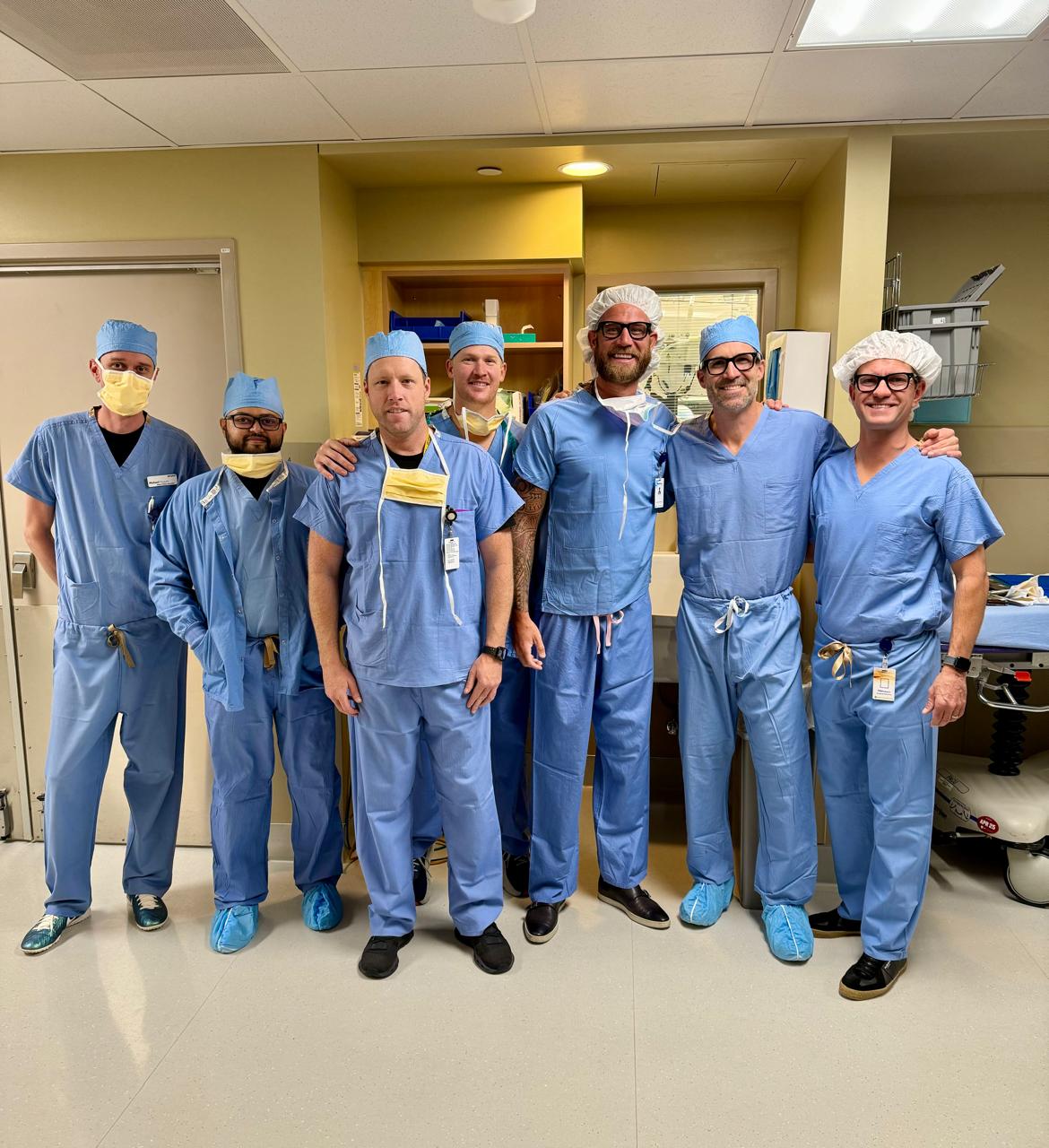
What is Robotic-Assisted Joint Replacement?
Key Advantages of Robotic-Assisted Joint Replacement
- Greater Precision
- Improved Implant Longevity
- Personalized Surgical Planning
- Reduced Recovery Time and Enhanced Rehabilitation
- Enhanced Safety and Consistency
Dr. Amith Kamath is a best knee replacement specialist in Bangalore.

